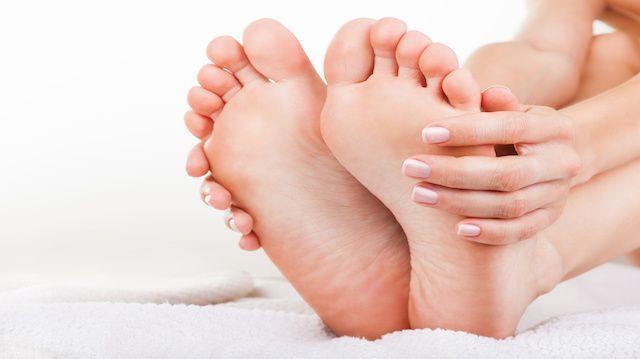
Walking. Since you first made the difficult transition from crawling to being able to totter around on your own two feet, you’ve probably taken it for granted. It’s not something you consciously have to think about, and in fact, if you’ve ever thought about it in exercise terms (à la “I think I’ll go for a walk!”), you may have even considered it to be a bit boring.
For some, however, this basic yet necessary mode of transport can no longer be taken for granted. If you suffer from foot pain, you would probably count yourself within this group. When every step is a painful one, it really makes you think about what you’ve lost.
The number of Americans who suffer from this debilitating condition is far greater than you might think. A recent survey by the American Podiatric Medical Association (APMA) revealed that 77 percent of Americans have experienced foot pain at some point in their lives but only one-third of these people sought out expert care by a podiatrist. That leaves two-thirds of the group to either suffer in silence or attempt to self-diagnose or treat the source of their foot pain.
For those people, here are three possible reasons for why your feet hurt and suggestions for what you can do to alleviate the problem or ease the pain.
Plantar fasciitis
This condition is the king of discomfort in the foot world, easily accounting for the most cases of pain or inflammation in the feet. It’s a symptom of overuse, resulting in painful inflammation of the band of fibrous tissue on the bottom of the foot, anatomically known as the plantar fascia.
Because it is this region of your foot that absorbs all your weight and any supplemental force (such as the gravitational force from jumping, running or stamping your feet), repeated pressure in this area can cause the tissue in your foot to become less elastic, leading to inflammation and hence pain. It is particularly common in those between the ages of 40 and 65, especially if those people are overweight.
Luckily, because this condition is so common, there is a fair amount of information out there on what you can do to ease the pain caused by plantar fasciitis. Massaging and stretching both your feet and calves regularly throughout the day can provide oxygenation of the inflamed regions by encouraging additional blood flow. This helps to reduce inflammations and additionally helps to lengthen the plantar flexor muscles, allowing you to move more freely and with less pain.
Bunions and hammertoes
Perhaps the next most common cause of foot pain is either bunions, which relate to your big toe, or hammertoes, which relate to the other smaller toes. This painful condition can be genetic, but it can also be caused by or made much worse by wearing tight or ill-fitting shoes. Bunions can develop when shoes rub repeatedly against the joint of the toe, causing the joint to become inflamed, swell up and develop a bump that can have the potential to misalign your big toe. Hammertoe occurs when the muscles of one or more of your smaller toes become weak, putting pressure on the joints and causing them to stick up or out at weird angles.
The solution is as simple as choosing the right shoe. There should be plenty of room at the end of the shoe, allowing your toes some space and ensuring they don’t scrunch up together. Orthotics can help to keep your toes where they should be and help to spread the load to reduce pressure on your squiggly digits. Better yet, move away from shoes altogether where possible — walk barefoot on safe surfaces such as grass and sand, or get yourself a pair of Vibrams, which are customized to fit your individual toes and should help you prevent or even recover from bunions or hammertoes.
Calluses
Somewhat ironically, calluses develop on our feet to protect pressure points and prevent the development of painful blisters; however, they have the potential to become painful themselves if left untreated. They typically develop on the balls of your feet, heels or on top of large bunions or hammertoes (yikes!), and can really make walking, running or sporting an unenjoyable experience.
The best way to treat painful calluses is to soak your foot in warm water at home, either in a large dish or in the bath. Once the foot has soaked to the point where the skin is soft, rub a moisturizing lotion containing either urea, lactic acid or glycolic acid into the callus. A moisturizer containing these ingredients should help to penetrate the callus and soften it, and with repeated application the callus should start to recede.
Feeling a little bit guilty that you haven’t been giving your feet the attention they deserve? Find out how you can give your feet some long overdue TLC.
—Liivi Hess
Liivi is an Integrative Nutrition Health Coach and is training to become a doula. She inspires women to find peace and personal power by taking control of health and fertility naturally. Liivi‘s passion is ancestral nutrition and primal lifestyle design. She and her partner Will live between Toronto, Canada and Queenstown, New Zealand.
Sources:
http://www.apma.org/Media/PRdetail.cfm?ItemNumber=13075
http://jbjs.org/content/85/5/872.abstract
http://www.japmaonline.org/doi/abs/10.7547/87507315-93-3-234

